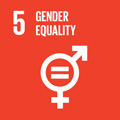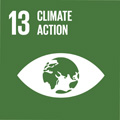- Docente: Marina Carfagna
- Credits: 2
- Language: Italian
- Teaching Mode: Traditional lectures
- Campus: Bologna
- Corso: First cycle degree programme (L) in Midwifery (cod. 6064)
-
from Jan 07, 2025 to Jan 29, 2025
Learning outcomes
At the end of the module, the student* possesses the ability to apply knowledge and understanding of the historical and legislative facts that have determined the cultural and professional evolution of the midwifery figure, with particular regard to the transition from a practical-empirical type of care, purely for women, to structured and organised care based on scientific knowledge.
Course contents
1 : Historical evolution of the midwifery profession and of the Italian health care system
- Definition of the professional figure of the midwife and the role of the midwife
- Concept of: profession, professionalism, role, function
-The Italian national legislation of reference for the midwifery profession.
2: The training and professional profile of the midwife
-The professional training of midwives: Laws, DLgs and DM of reference (degree, master and master degree)
-The professional profile of the midwife defined by DM 740/94
-The determination of the field of activity and responsibility: Law 42/99 and Law 251/2000: reference criteria
-Role and attributions of the midwife in the working world (hospital, territory, manager/teacher): general concepts.
3: The Practice of the Profession and the Order of the Midwifery Profession
-Non-medical health professions (Law 43/2006): Establishment of orders, establishment of the coordination function, classification of non-medical health personnel.
-Practice of midwifery professional activities according to Legislative Decree 206/2007 art.48
-Organisation of midwifery care in Italy
-The governing bodies of Italian midwives the FNOPO and the Orders of the Midwifery Profession.
4: Operational areas of competence of midwives/legislative aspects and organisational models
-The Midwifery Care model: Italian situation and international report
-Focus on midwifery care continuity models offering continuity options for each woman and the role of integrated primary health services and relevant local referral services.
-DM 77/2022 and the figure of the community midwife
-World Health Organization (WHO): ‘Transitioning to Midwifery Models of Care: Global Position Paper’ ( 2024).
-ICM - International Confederation of Midwives
EMA - European Midwives Association.
5. The professional liability of midwives
-Law No 24 of 8 March 2017 on ‘Provisions on the safety of care and the person assisted, as well as on the professional liability of health professions practitioners’.
-The liability profiles for the midwifery profession (case simulation).
-Health documentation.
-The legislation on privacy in the health context.
-Professional secrecy.
6. Ethical and deontological issues of the Midwifery Profession.
-The International Code of Ethics for Midwives ICM 06 May 1993
-The Code of Ethics for Midwives
Teaching methods
- Interactive lectures
- Individual and group work
Assessment methods
- The examination consists of a written test with open and multiple-choice questions covering the entire syllabus.
- The student must answer at least 75% of the questions correctly.
Teaching tools
- Video projector, texts, journals and sitography of interest to the midwifery profession.
Office hours
See the website of Marina Carfagna
SDGs



This teaching activity contributes to the achievement of the Sustainable Development Goals of the UN 2030 Agenda.
